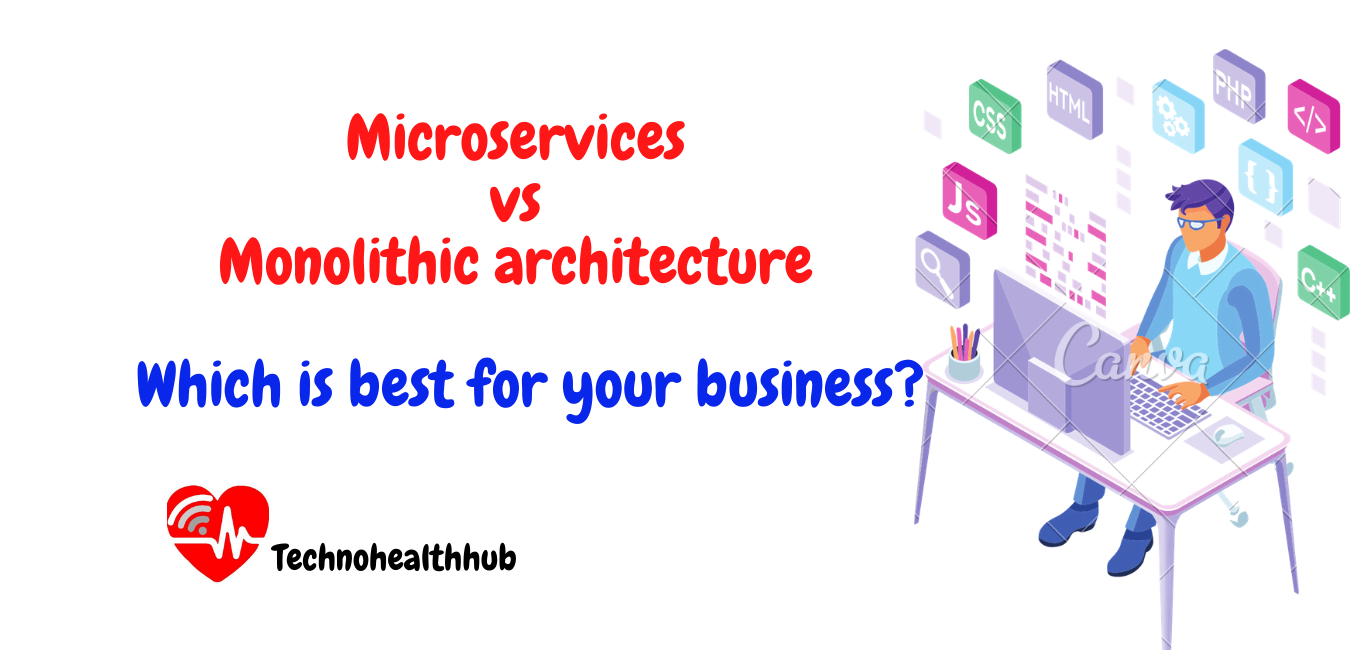Web application architecture describes the relationship between servers, databases and applications. All web applications are made of two basic components- client-side front end (code stored in the browser and displayed to the user) and server-side backend ( the server that application runs on the server and uses to communicate with the hardware. Some of the common approaches to implementing a server-side application are monolithic architecture and microservices. Let’s check out the complete details of both the architecture patterns.
Monolithic architecture
Monolithic architecture is the traditional way of building the application as a single indivisible unit. As the name implies, the monolithic application is a single-tiered software application, wherein the different components are combined in a single program. In monolithic architecture, the components of the software program are interconnected and interdependent. All software components are tightly coupled, and each component depends on one another. It is the standard model of building software. But with a monolithic architecture, if a program component must be updated, the whole of the application has to be rewritten. In other words, a modification to the small section of code requires building and deploying the entire version of the software.
Characteristics of Monolithic architecture
- The monolithic architecture consists of three tiers- presentation layer on the top, application layer in the middle and data layer at the bottom. Hence it is also called multi-tier architecture.
- All the components of the monolithic architecture are developed together which are interdependent on each other. They are deployed to the web server as one single unit.
- The monolithic architecture comprises a single code base that includes UI related files, Source code files, configuration files, build and dependency management files.
Advantages of Monolithic architecture
Monolithic architecture does offer some advantages which are elucidated below.
a) Easy debugging and testing
As a monolithic application is a single indivisible unit, end-to-end testing is much faster, and they are also much easier to debug.
b) Less cross-cutting concerns
Monolithic architecture is extremely simple for workflows that touch every part of the application. As everything takes place in the same application, cross-cutting concerns such as logging, security and caching can be easily addressed.
c) Better performance
As shared memory access is faster in monolithic architecture, as compared to interprocess communication (ICP) in microservices, the approach offers performance advantages.
Limitations of Monolithic architecture
Here we take a look at the limitations of the Monolithic architecture.
a) Lack of Flexibility
The Monolithic architecture is not flexible; there is no scope for incorporating different technologies. The technology stack that has been decided at the beginning of the project has to be followed throughout the project.
b) Difficult to Scale
Scalability is another concern with Monolithic architecture. As the application becomes, it is difficult for developers to scale with increasing load.
c) Slow development
The development is slow in monolithic architecture as compared to microservices. It is particularly complicated to modify large monolithic applications as they are difficult to understand and modify the code.
d) Tough to adopt newer technology
With monolithic architecture, it is difficult to adapt to adopt a newer technology incrementally. If the application uses a particular framework, it is challenging to migrate to a newer framework. For that, one needs to rewrite the entire application.
Also Read: How Mobile Apps are Revolutionizing The Media And Entertainment Industry
Microservice Architecture
Microservices are a way of breaking down into standalone, independent applications that can be run on different hardware or server instances. The application is built as a suite of modular services. Each module has a specific business goal or service that communicates with another through simple APIs to solve complex business problems. They are loosely coupled services that can be developed, deployed and maintained independently. Though the architecture has increased complexity, the microservice offers many advantages over the monolithic structure. Unlike the monolithic architecture, the microservices has its own CPU, runtime environment, and a dedicated team working on it. Each service can run its own process and can communicate autonomously without depending on each other or the application as a whole. The microservice architecture promises business agility, flexibility and faster time to market.
Companies adopting microservice architecture
- Amazon
- Paypal
- SoundCloud
- The Guardian
- eBay
Advantages of Microservices
Microservices solve many of the problems associated with Monolithic architecture owing to its modularity. These are generally written in different programming languages and employ different storage techniques. Let’s take a look at some of the advantages of Microservices.
a) Deployment Flexibility:
Different teams can create and deploy microservices independently; they can put them on different servers, even build them on different platforms or languages.
b) Fault Isolation:
Microservices offer enhanced fault isolation; if there is an error in one service, the whole application does not stop functioning. Once the error is fixed, it can be deployed for the particular service rather than deploying the entire application.
c) Developer Independence
Each microservice can be maintained by a single Dev team, thereby bringing in greater developer freedom and independence.
d) Readily Scalable
As microservices are made of smaller components, they take up only fewer resources. They are also easier to scale in case of increased demand for a particular component.
Disadvantages of Microservices
Despite offering a horde of advantages, the microservice architecture does come with certain disadvantages. Check some of them below.
a) Expensive
The microservices run in their own environments with their own CPUs. As it works through API calls, it is quite expensive. Add to it; the microservices require hosting infrastructure with maintenance and security support. Also, it warrants the need for a skilled development team to understand and manage the services.
b) Critical Interface Control
The architectural model involves a large number of APIs that are vital for the operation of the enterprise. If you change the API, any application using the microservice will be affected, and as such, the interface control becomes more critical.
Also Read: Paperless and Automated Security in Global perspective and its Implications in India- 2021
Monolithic Architecture Vs the Microservices
The choice between monolithic architecture and microservices architecture boils down to the needs of the organisation. It is no wonder that system architecture defines the fate of the business. Simplicity is the hallmark of monolithic architecture; it is not surprising that many leading global companies (Netflix, Spotify, Linkedin, Twitter) have initially started their business as a monolith and later switched to microservice architecture. But having said that, if the business is small with fewer engineering teams, building a proof of concept or unproven product, and having no microservices experience, a monolithic application fits the job. It is much easier to build, deploy, test and test as compared to microservices. But for complex and evolving applications, microservices is the best option. It is ideal for handling complicated systems having different functions and services within one application.







